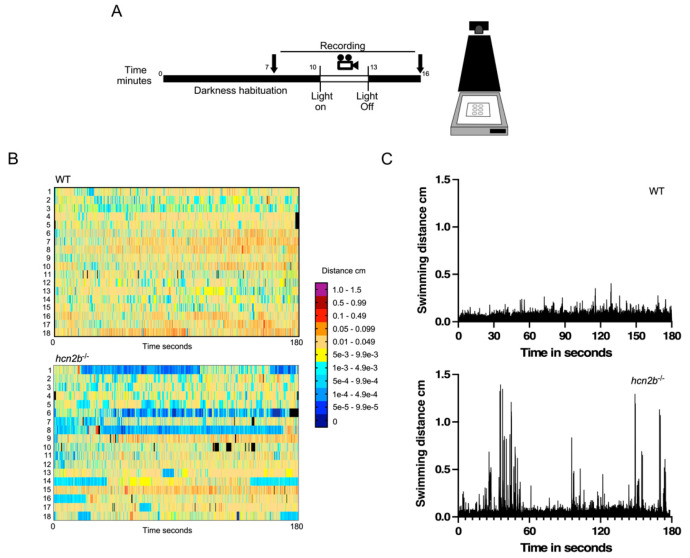Figure 4
Motility during dark-light-dark transitions. (A) Video recording protocol. At seven days post-fertilization, larvae were placed in 23 mm diameter wells and covered from light for ten minutes for habituation to darkness, then exposed to three minutes of continuous light and, finally, three minutes of darkness. (B) Heatmap of the swimming behavior of WT and hcn2b−/−. 18 WT and 18 hcn2b mutants are shown. Low activity periods that last over time (in blue) can be interpreted as absence periods (larvae 1, 6 and 8). The high activity in red and purple are fast in a short period in time (see hcn2b−/− (larvae 1, 8, 15 and 18). (C) Swimming distances of 18 WT and 18 hcn2b−/− mutants in the light period. The hcn2b−/− mutants displayed brief peaks as indication of fast hyperactivity episodes.

